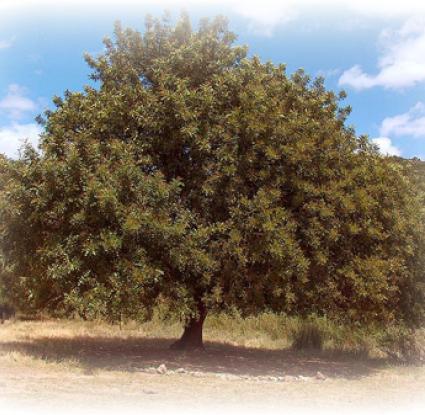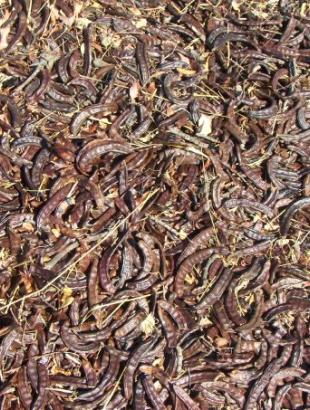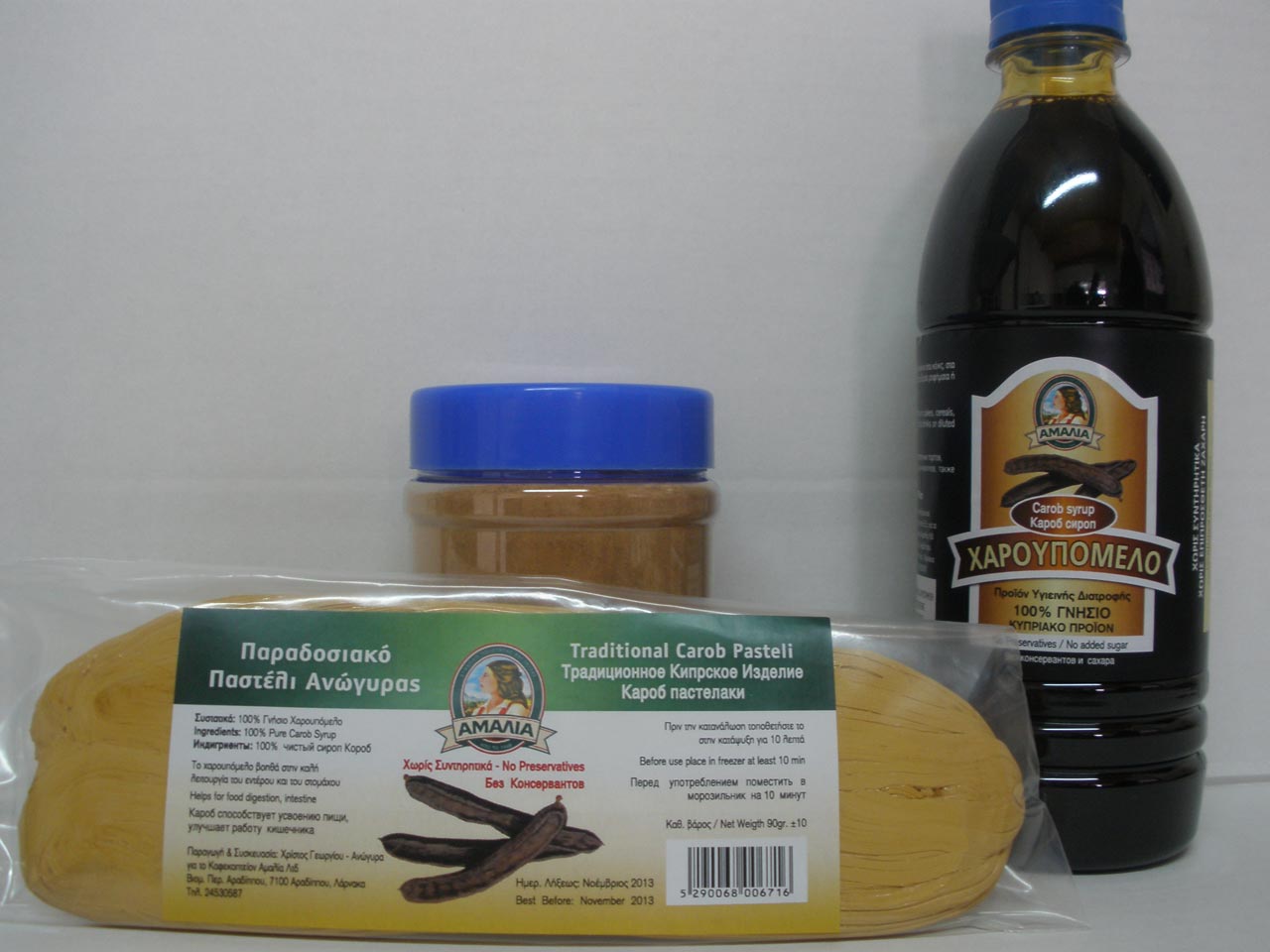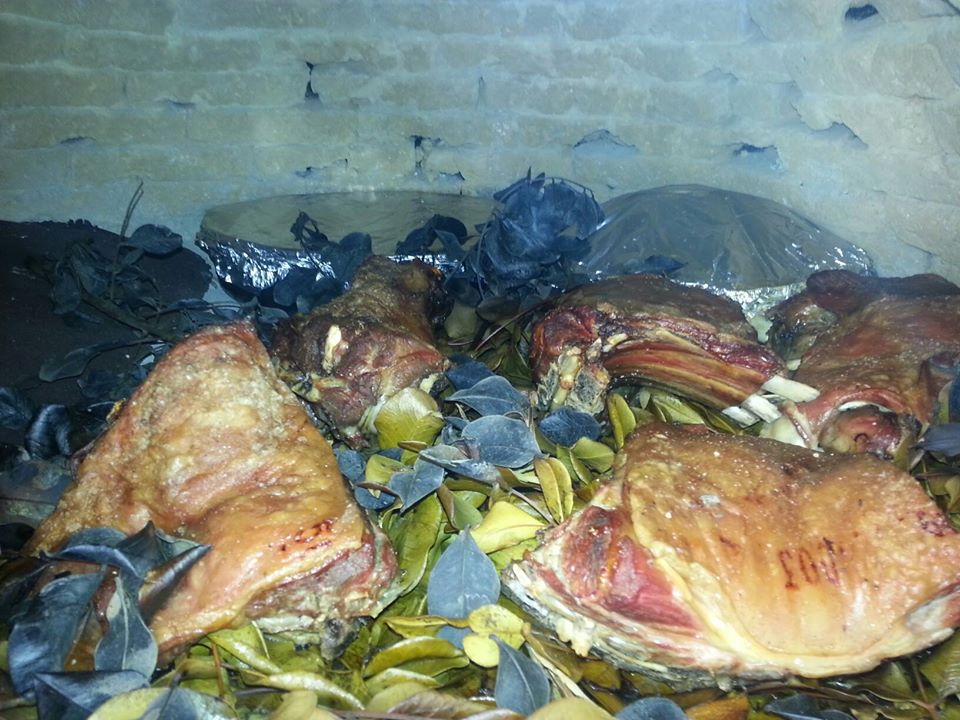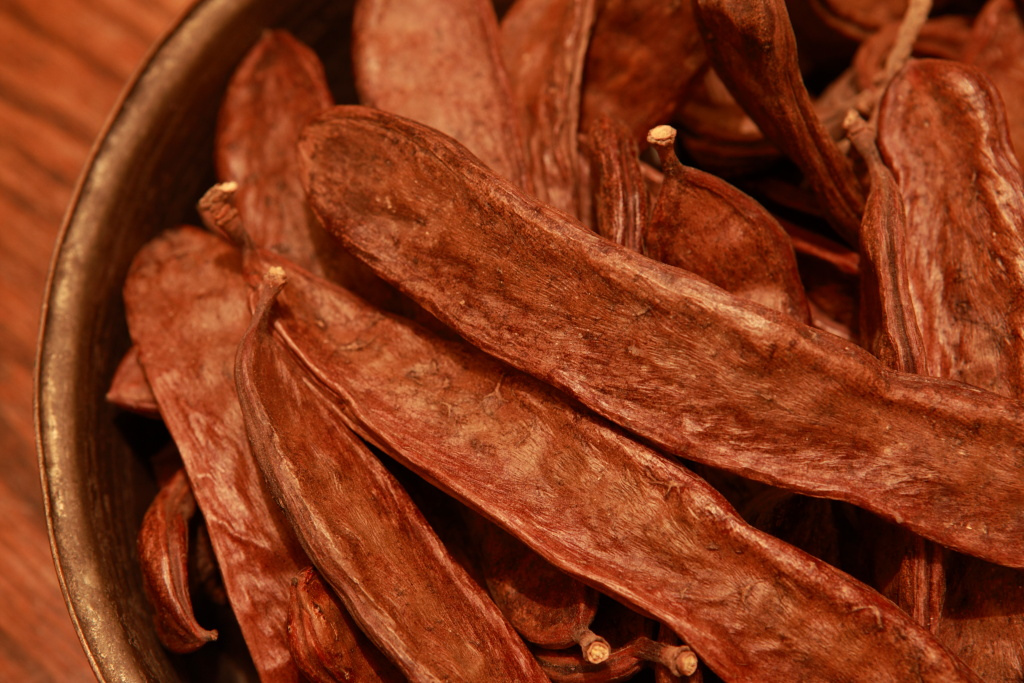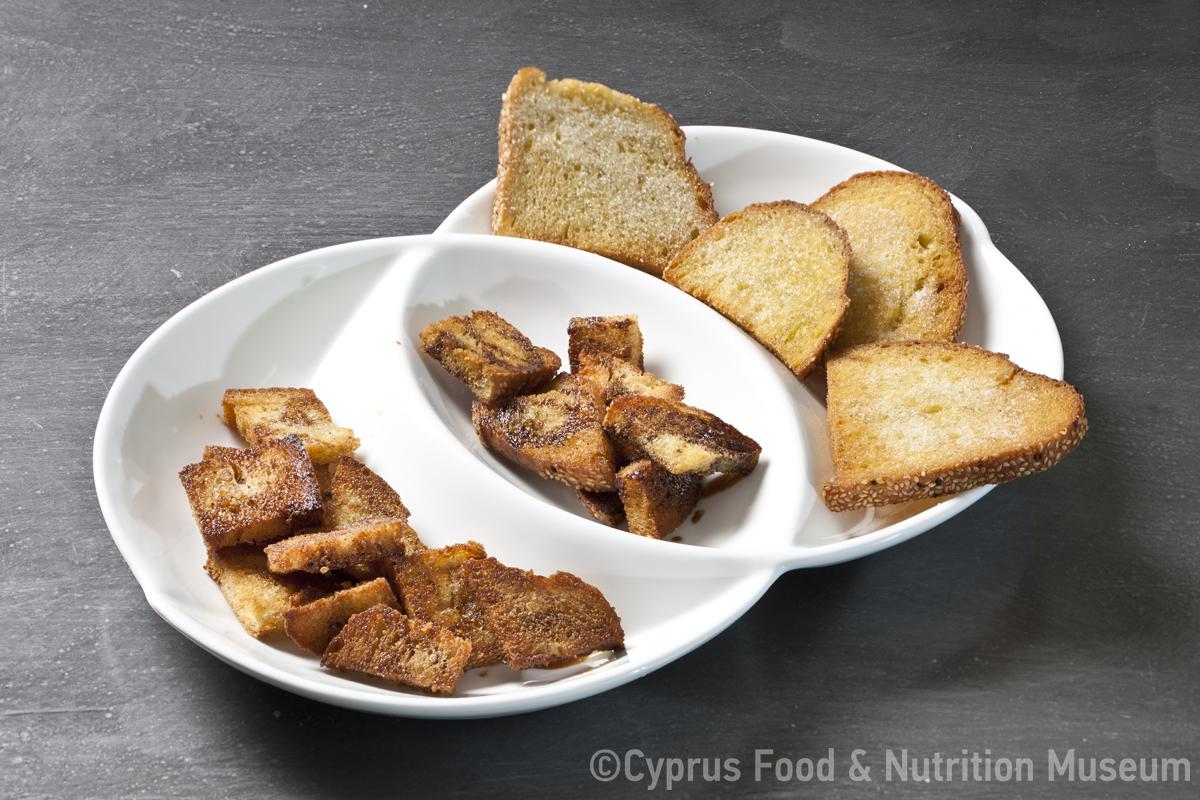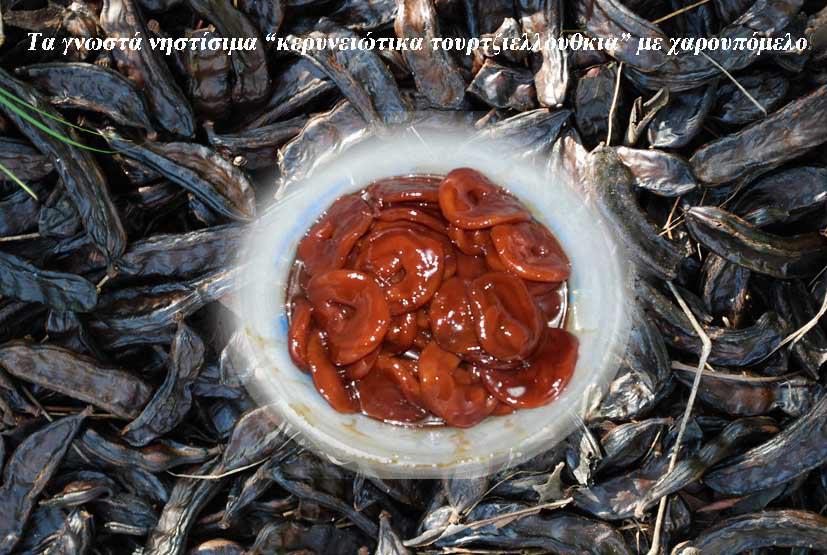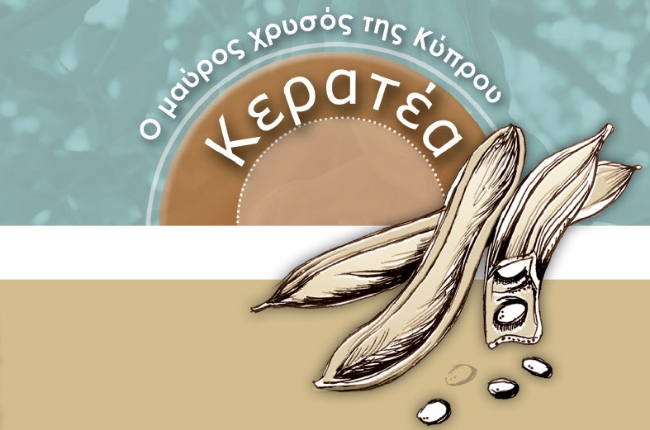Early on, the inhabitants of the island exploited carobs by exporting them to neighbouring countries.
Name - Origin
Χαρουπιά και χαρούπια.
The carob tree is widely known throughout Cyprus under the name ‘terats̆iá’. Carobs are called ‘teráts̆ia’.
ETYM. < Latin ceras, which they translated to κεράτι(o)ν and by anagram to teratsin (Kypri 1979 [2002²], entry τεράτσιν,το, 466)
Scientific name of carob tree: Ceratonia silicual L. (Chatzikostas 1994, 105)
The Cypriot names teratsia' and 'teratsin' are derived from a variation of the ancient Greek words 'keratea' and 'κεράτιον', while the modern Greek names 'χαρουπιά' and 'χαρούπι' derive from the Arabic 'kharrub' (Gennadios 1914, 497).
Carob tree: s. terats̆iá pl. terats̆iés
Carob: s. teráts̆in pl. teráts̆ia.
The name of the carob tree is also mentioned by Archimandrite Leontios Hadjikostas in his article «Η χαρουπιά στο χωριό μου την εποχή του μεσοπολέμου» (the carob tree in my village during the interwar period): in Cyprus the carob tree is called "teratsia" and is a derivative of the word "Keratea", apparently because of its fruit which is long like a horn and called "teratsin" (Hadjikostas 1994, 105).
The derived words "haroupomilos" (carob-mill) and "haroupomelo" (carob syrup) are called "teratsomilos" and "teratsomelon", respectively. A densely planted field of carob trees was called 'teratsarkón' (Hadjikostas 1994, 105).
Harvesting of carobs would usually begin in the last ten days of August. The starting date of the carob harvest was set by the government and would last usually for three weeks. The whole family would participate in the harvest, and when the production was large, hired labourers were called in: the men, called halistádes, would throw down the fruit with sticks, and the women, called mazóhtres, would collect the carobs and gather them into baskets (Hadjikostas 1994, 105).
Functional and symbolic role
The carob tree has been thriving in Cyprus since ancient times (Hadjikyriakou 2011). Early on, the inhabitants of the island exploited the fruits of the carob tree by exporting them to neighbouring countries (Sakellarios 1855). Archimandrite Kyprianos reports that Cyprus produced carobs of superior quality, which were exported by ship to Egypt and Syria (Archim. Kyprianos 1788, 538). According to Athanasios Sakellarios, carob trees were scattered everywhere and the tree was cultivated in Limassol from 1854 onwards (Sakellarios 1855). Cypriots exported large quantities of carob trees to Constantinople, Russia and Italy.
Carobs were either consumed fresh or they were processed to make carob syrup and pastelli ( Hadjikostas L, 1994). Carob syrup was regarded as the black gold of Cyprus, since it was an important foodstuff (Petasi 1992).
Although carobs were not used on any festive occasion, during their harvest, it was customary to bake tertelouthkia or koullourouthkia me to epsima (with carob honey) (Kypri - Protopapa 2003, 149, 268).
Additional information and bibliography
Carob consumption in Cyprus was almost negligible. Apart from some limited quantities intended for local consumption and for the preparation of carob syrup and pastelli, most of the carob production was transported - within two or three months of harvesting - to the country's ports and from there it was exported. Carobs were exported mainly to England, France and Egypt, and secondarily to Italy, Spain and other countries. The first to export carobs to England was D. Pierides. In the English markets, the price of Cypriot carobs was one or two shillings per tonne higher than the price of Portuguese or Sicilian carobs (Gennadios 1900, 27-28 and 33).
Archimandrite Kyprianos (1788 [1971²]), Ιστορία Χρονολογική της Νήσου Κύπρου, Paliggenesias publications, Nicosia.
Gennadios P. G.(1900), Περί κερατέας, «Κυπρίου» press, Λευκωσία.
Gennadios P. G. (1914), Λεξικόν φυτολογικόν: Περιλαμβάνον τα ονόματα, την ιθαγένειαν και τον βίον υπερδεκασχιλίων φυτών, εν οις και τα λόγω χρησιμότητος ή κόσμου καλλιεργούμενα, των οποίων περιγράφονται και η ιστορία, η καλλιέργεια, τα προϊόντα και αι νόσοι, Paraskevas Leonis Printing House, Athens.
Ionas, I. (2001). Παραδοσιακά επαγγέλματα της Κύπρου (Publications of the Centre for Scientific Research XXXVII), Centre for Scientific Research, Nicosia.
Kypri Th. D. (ed.) (1979 [2002²]), Υλικά διά την σύνταξιν ιστορικού λεξικού της κυπριακής διαλέκτου, Μέρος Α΄, Γλωσσάριον Γεωργίου Λουκά, Publications of the Centre for Scientific Research, XLI, Nicosia.
Kypri Th. D. (ed.) (1983 [2003²]), Υλικά διά την σύνταξιν ιστορικού λεξικού της κυπριακής διαλέκτου, Μέρος Β΄, Γλωσσάριον Ξενοφώντος Π. Φαρμακίδου, Publications of the Centre for Scientific Research, IX, Nicosia.
Kypri Th. - Protopapa K. A. (2003), Παραδοσιακά ζυμώματα της Κύπρου. Publications of the Centre for Scientific Research, XVIII, Nicosia.
Varvara Yangou, Demetra Demetriou, Savvas Polyviou, Argyro Xenophontos, Tonia Ioakim

